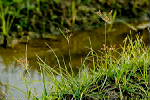
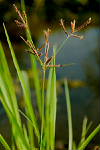
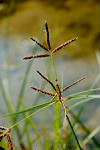
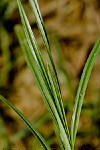

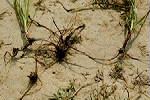

Botany Biology Phenology Ecology Distribution Agricultural importance Cultural control Biological control Chemical control
| Description : | Terrestrial, perennial, tufted to prostrate herb, rooting at nodes. Roots fibrous, white or brown. Stems triangular, solid, glabrous. Stipules absent. Leaves simple, not lobed or divided, alternate spiral, sessile, linear, more than 2 cm long/wide, margin entire, apex acute, base clasping, parallel-veined. Leaf sheath present, triangular in cross section. Flowers bisexual, grouped together in a terminal umbel, sessile, red, purple or brown, petals absent. Fruit a nut. |